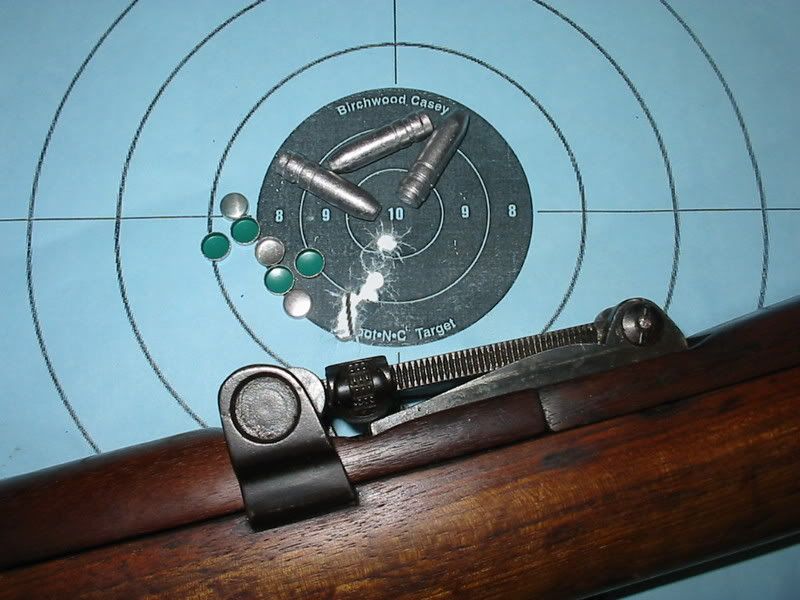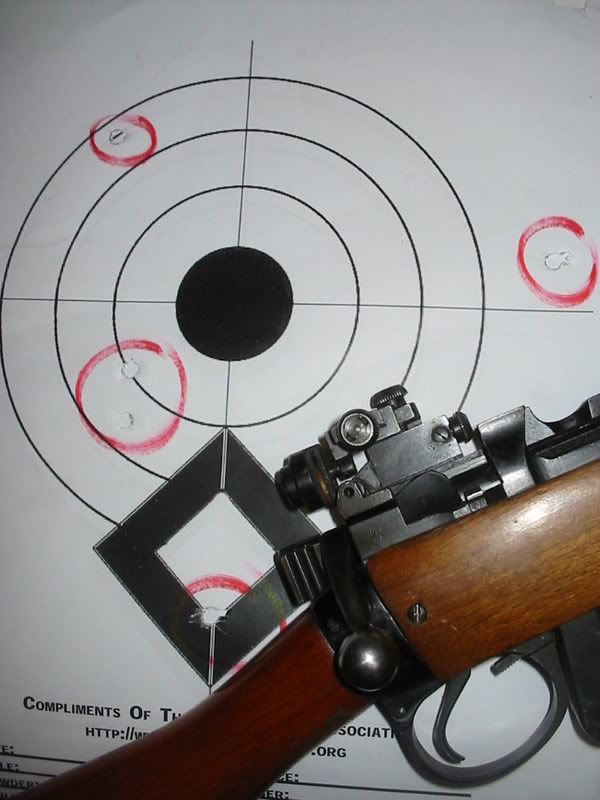Team.
Tested some of my own gas checks ex Charlie's "Freechex" TM gadget today in both my SMLE and No4 MkII. Checks made from 0.011 printing plates in aluminium. Results were at extremes IE; terrible and fantastic.
Good first:
SMLE pushing a CBE 313 220 over 41gr of H4350 for 2000fps - proven 2 MOA load. Threw the first round for some reason but 2-5 into 1 inches at 50.
Bad:
No4 MkII pushing a CBE 316 175 over 47gr of H4350 for 2390fps - recently proven 2 MOA load. Patterned like a shot gun.
Sooooo, what was the difference? Shank/check fit. The 316 175 bullet has a slightly stouter shank. Jim at CBE cut it bigger as he intended the bullet to be used in over sized .303 barrels. The 'Freechex' were a snug fit. On the 313 220 bullets the checks were very loose.
I surmise the checks are coming off the 313 220 loose shank uniformly however not so on the 316 175 and thusly causing the bullets to skew in flight. The top right bullet on the second photo actually appears to be yawing which reinforces my theory.
Tomorrow I am testing the CBE 313 215 in the No4 MkII and the Lyman 311316 in my .32-20. 'Freechex' loose on both. More later.

|
   
   
|


|






 Reply With Quote
Reply With Quote














